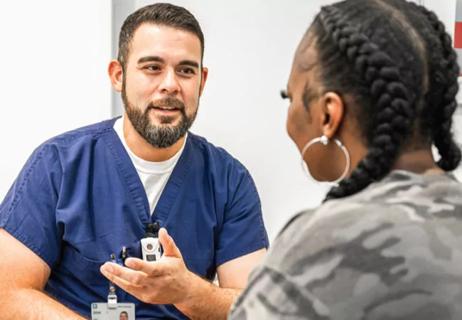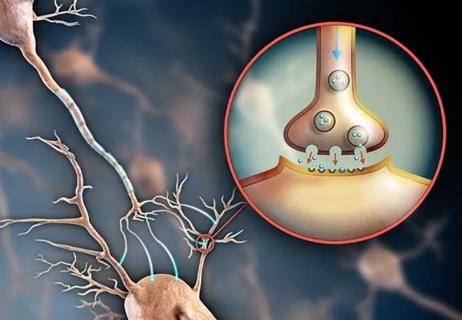Guidance for helping youth be seen for who they are

Cleveland Clinic is a non-profit academic medical center. Advertising on our site helps support our mission. We do not endorse non-Cleveland Clinic products or services. Policy
Child and adolescent psychiatrists are increasingly asked to work with transgender and gender non-conforming (TGNC) youth, as recent studies indicate a rise in the rate of mental health concerns among lesbian, gay, bisexual, transgender and queer (LGBTQ) adolescents. For instance, Toomey and colleagues reported that up to 50% of transgender female-to-male adolescents may exhibit suicidal behavior (Pediatrics. 2018;142[4]:e20174218).
At the same time, many child and adolescent psychiatrists are not comfortable working with this population, given the minimal time that’s spent teaching medical students and residents about the healthcare needs of the LGBTQ community. Yet these providers may be asked to see TGNC adolescents in a variety of contexts, including inpatient and outpatient settings, so familiarity with the pertinent issues arising in this population is key.
As a child and adolescent psychiatrist working on a pediatric gender team, I see many TGNC youth in my outpatient practice, and my role varies depending on the needs of the patient and family. Some patients are simply looking to establish care with an LGBTQ-affirming psychiatrist, while others see me as part of their process for beginning gender-affirming medical treatments, such as hormone therapy or surgical procedures. In addition to completing a comprehensive psychiatric assessment, I provide support to families and youth during the transition process, serve as a liaison with psychotherapists and schools, and provide referrals to community resources.
For a TGNC youth interested in gender-affirming medical interventions, the World Professional Association of Transgender Health (WPATH) Standards of Care recommend that the young person meet with a mental health provider to obtain a letter of support indicating that they meet DSM-5 criteria for gender dysphoria and would benefit from treatment with gender-affirming medical care.
During my first meeting with families, I conduct an in-depth exploration of the youth’s gender journey with parent(s) and child in the room together for the majority of the session. I believe it is important for the parent(s) and child to be able to discuss gender in an open and honest way, particularly if we are considering a medical or surgical intervention.
Child and adolescent psychiatrists can assess for gender dysphoria in a variety of ways. All youth should be asked their preferred name and pronouns, and, with the youth’s permission, these should be documented in the medical record.
I then ask the young person, and then their parent(s), for their earliest memories of gender nonconformity, feeling like a different gender or wanting to be referred to as a different gender. We look for developmental clues from childhood, including preferred interests, toys, activities, games, play and clothing. Many transgender youth have childhood playmates of their affirmed gender and take advantage of pretend play to present their affirmed gender.
We discuss when the patient started puberty and use questioning to gauge the young person’s likely Tanner stage, as this will influence the type of medical intervention that can be considered. With the parent(s) out of the room, I explore the youth’s relationship with their body and their experience of going through the “wrong” puberty. TGNC persons may be uncomfortable with their primary or secondary sex characteristics, which can result in avoiding looking at oneself when undressed, extreme discomfort with showering and challenges with intimacy. Dysphoria can be exacerbated when transgender boys (those with sex assigned female at birth) experience menses and when transgender girls (those with sex assigned male at birth) experience spontaneous erections.
Given the challenges that TGNC youth can face, I want to better understand the youth’s support systems and whether their gender identity is public or private within their immediate family, extended family, school and friend group. I ask youth to share their “coming out” stories, including to whom they initially disclosed their gender identity, the response from parents and the understanding of the school. Youth frequently ask schools to use their preferred name and pronouns, and make a plan with school administration around the use of bathrooms, as they should be afforded the opportunity to use the restroom consistent with their affirmed gender.
Frequently, I meet with families for a series of sessions to fully understand the child’s gender journey. I use the clinical history, collateral information from the patient’s psychotherapist and structured assessment questionnaires (such as the Gender Identity/Gender Dysphoria Questionnaire for Adolescents and Adults) to determine if the patient meets criteria for gender dysphoria.
Treatment of gender dysphoria can involve social, medical and surgical interventions, which have increasing levels of irreversibility.
Social transition involves altering one’s physical appearance to better align with the expectations of the affirmed gender. This can involve clothing, hairstyle, makeup, name, pronouns, voice, etc. Some young people benefit from a stepwise social transition as part of their gender exploration — for instance, starting just at home with immediate family, then in a supportive friend group, and then at school.
Hormone therapy includes puberty blockers, with continuous GnRH analogues for younger patients in Tanner stages 2 or 3 of puberty as well as testosterone or estrogen for teens with the cognitive ability to provide informed consent for treatment.
Surgical interventions include “top surgery” (mastectomy or breast enhancement) and “bottom surgery” (hysterectomy ± phalloplasty and orchiectomy ± vaginoplasty).
Letters of support from mental health providers are required for a medical or surgical intervention, per the WPATH Standards of Care. There is no one way to transition, and not all TGNC individuals elect treatment with hormones and/or surgery.
By appropriately and competently addressing young people’s gender identity struggles, child and adolescent psychiatrists can effectively refer patients for appropriate treatment, which has been shown to reduce psychiatric symptoms, including suicidality. All youth, including TGNC youth, deserve to be seen and heard for who they are.
Dr. Lambrese is a child and adolescent psychiatrist with Cleveland Clinic’s Center for Behavioral Health.

Consultation service provides comprehensive care to patients with anxiety, PTSD, schizophrenia, and other high-risk disorders

Study shows a growing openness to the clinical potential of psychedelic treatments

Urine test strips and point-of-care testing may be key to slowing opioid epidemic

Study sheds light on how clinicians addressed their patients’ pain and insomnia during the pandemic

Recovery's in Reach provides treatment options, peer support to those struggling with alcohol and drug use

Experts recommend task-focused strategy for monitoring treatment

Finding changes the treatment landscape of psychiatric illness

Patients benefit when doctors disclose with care